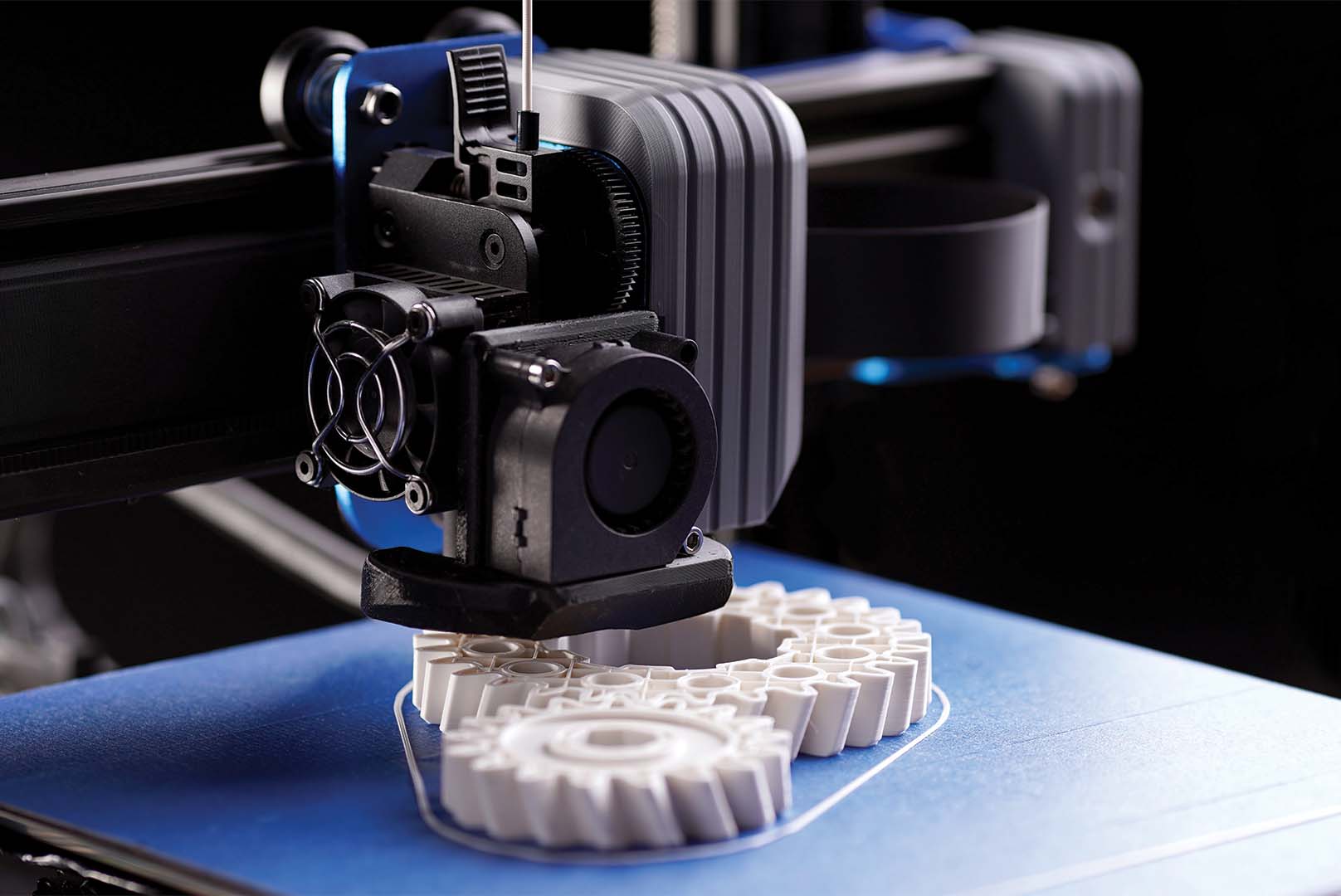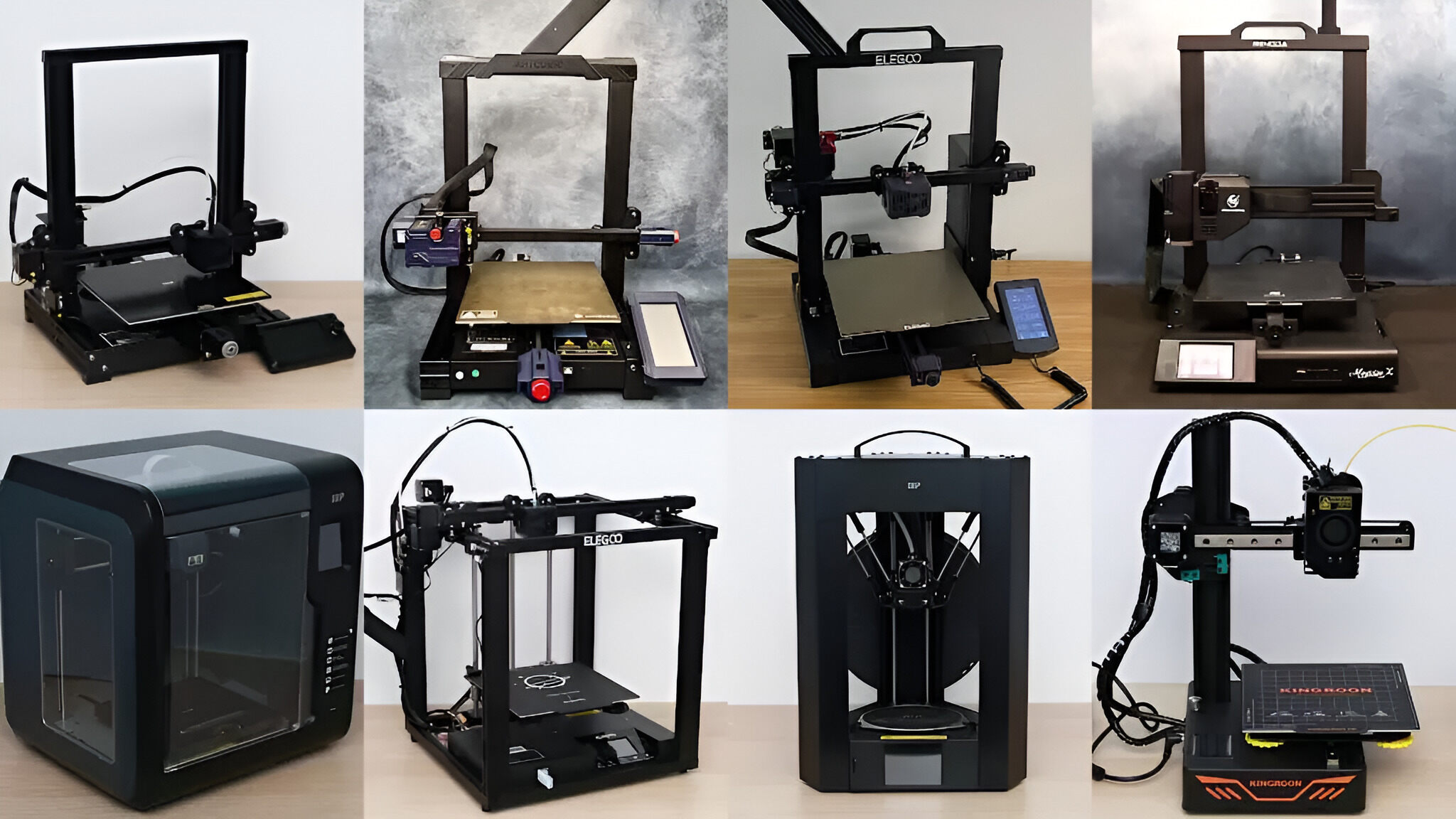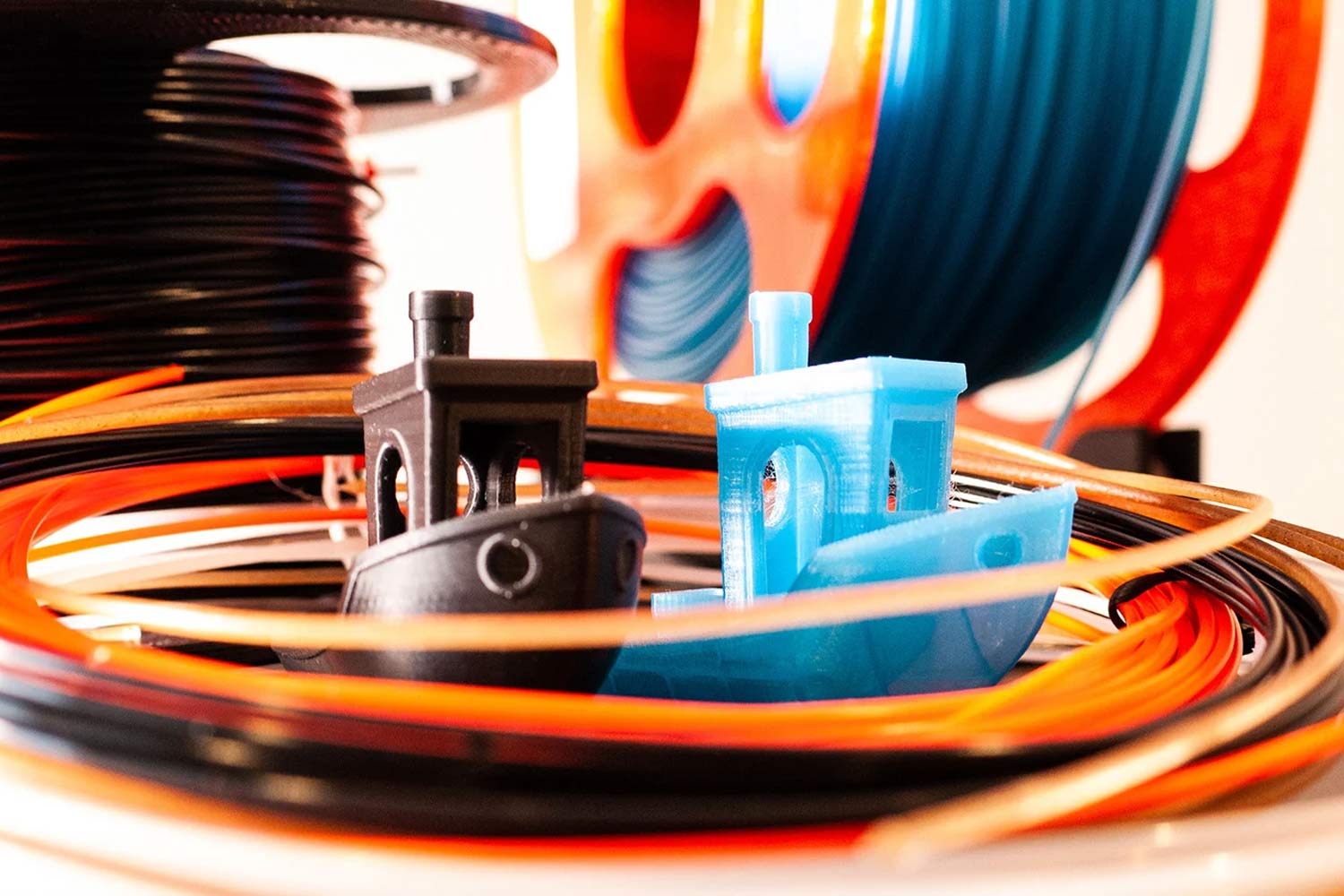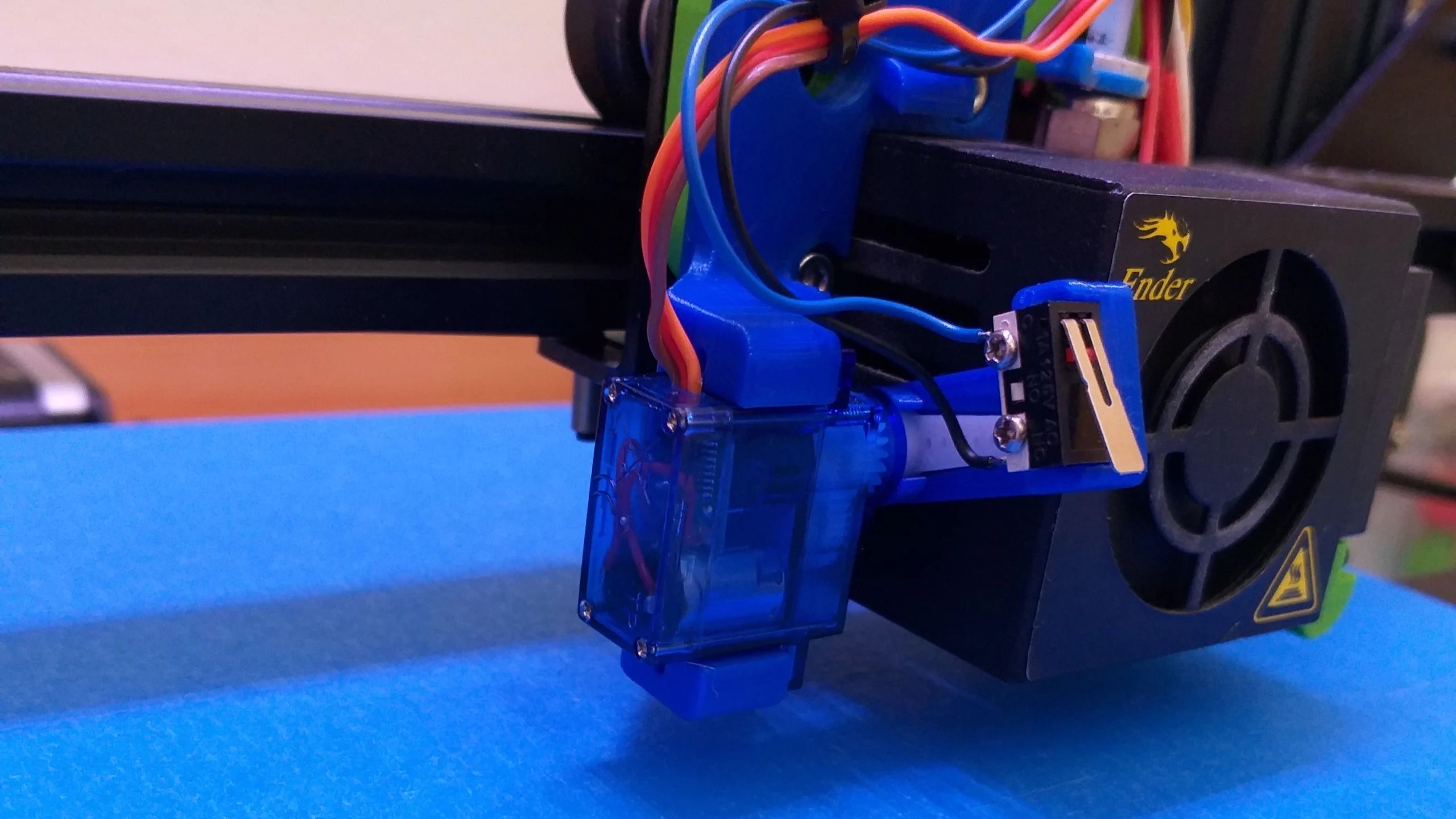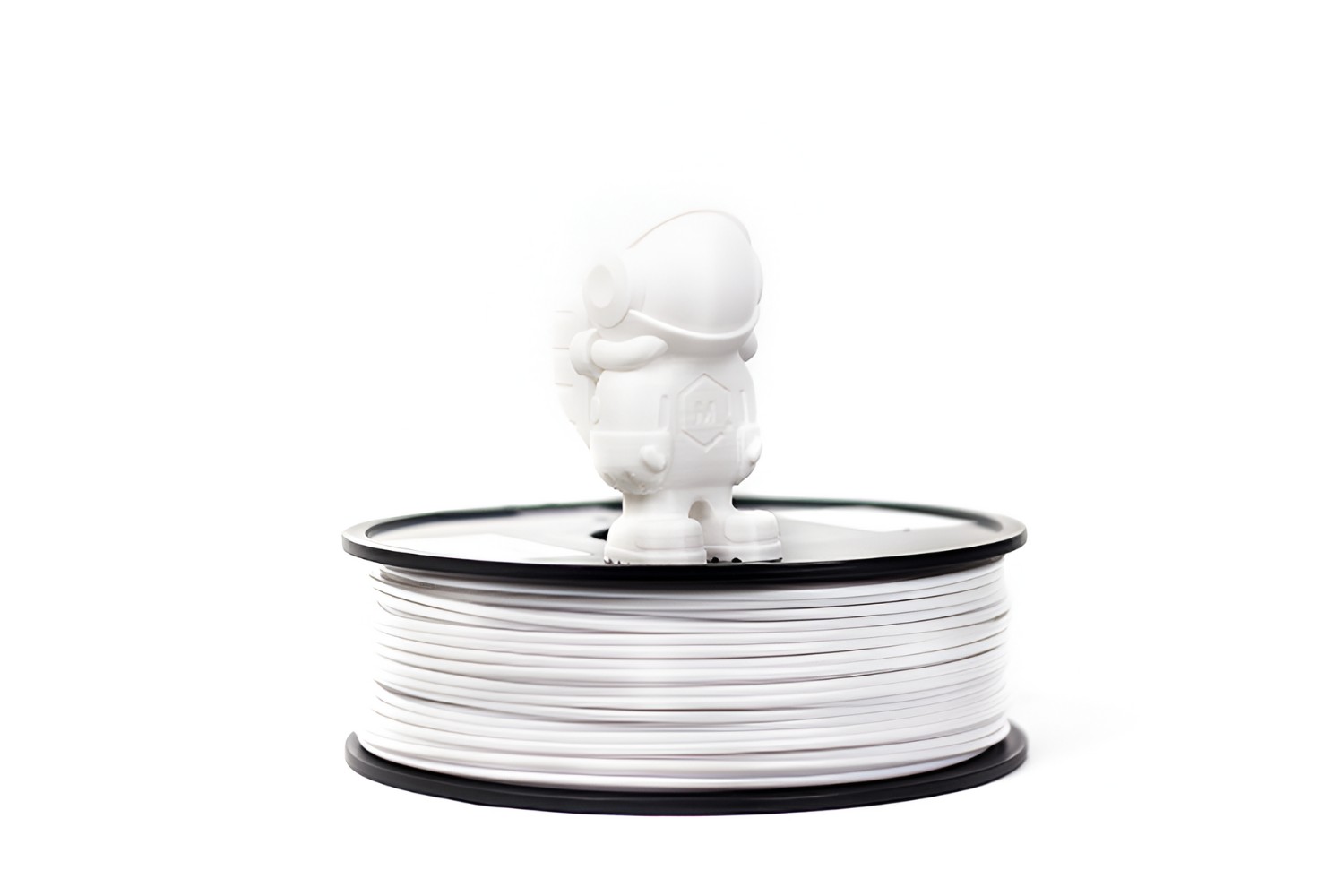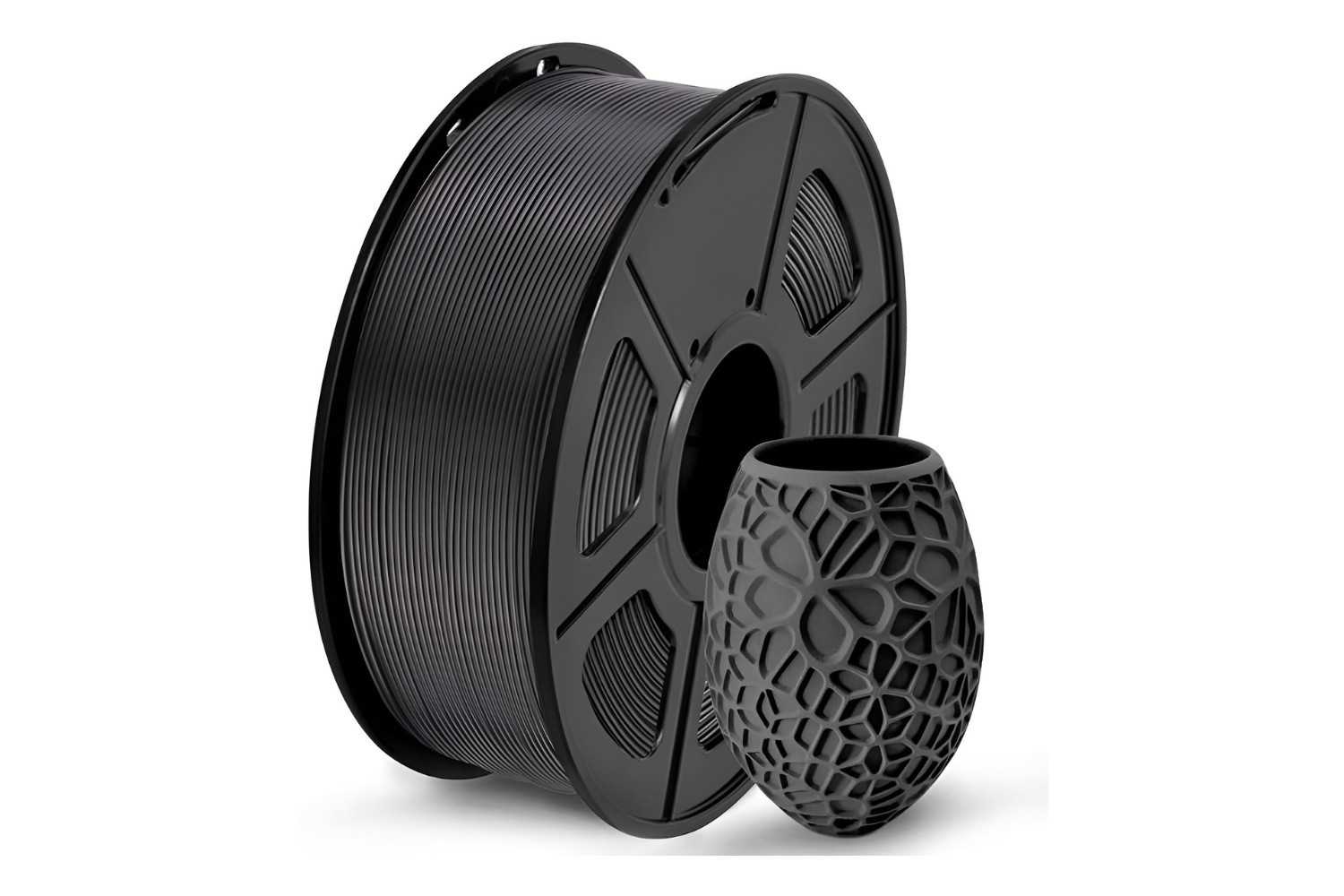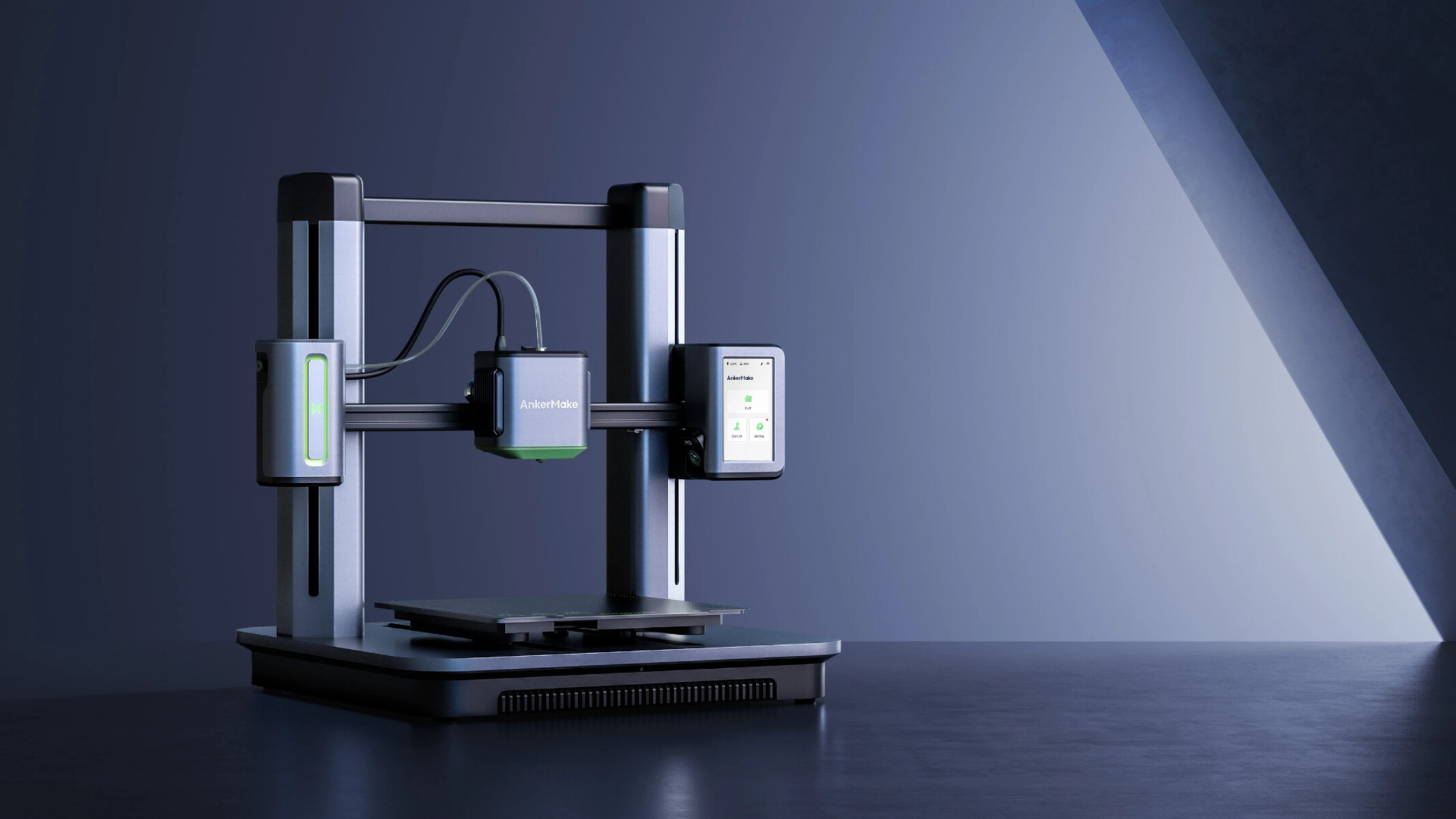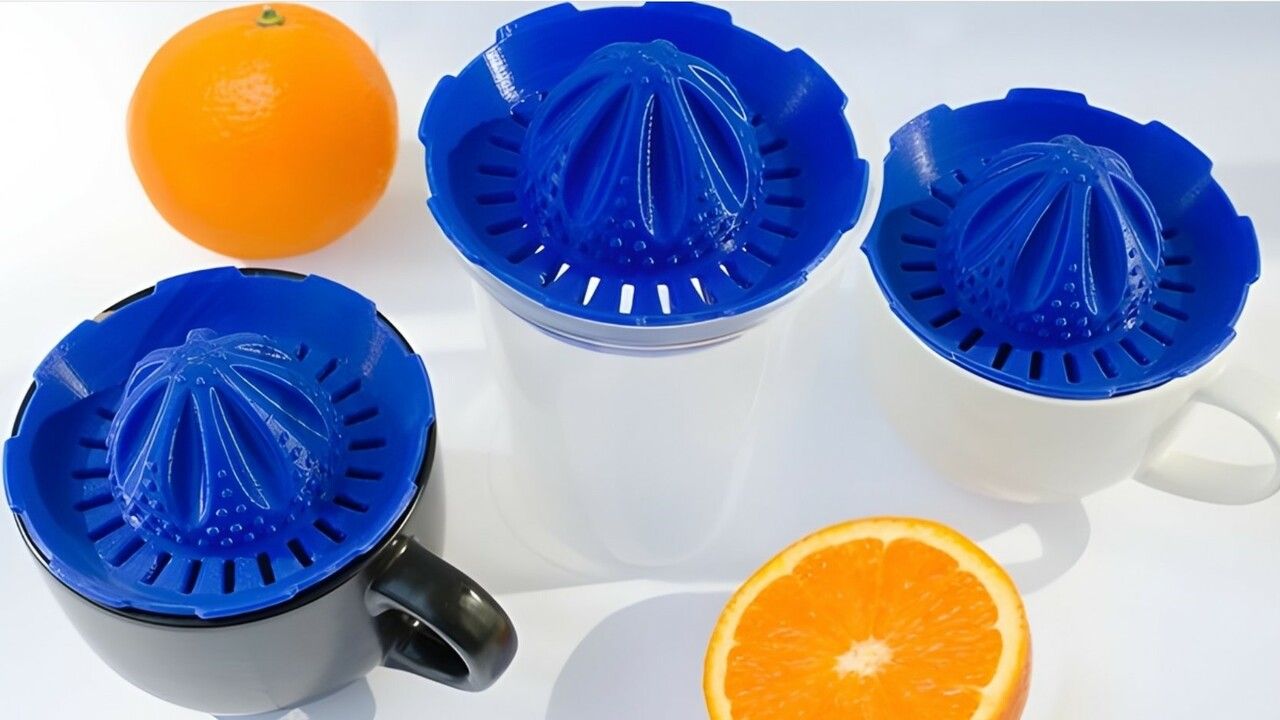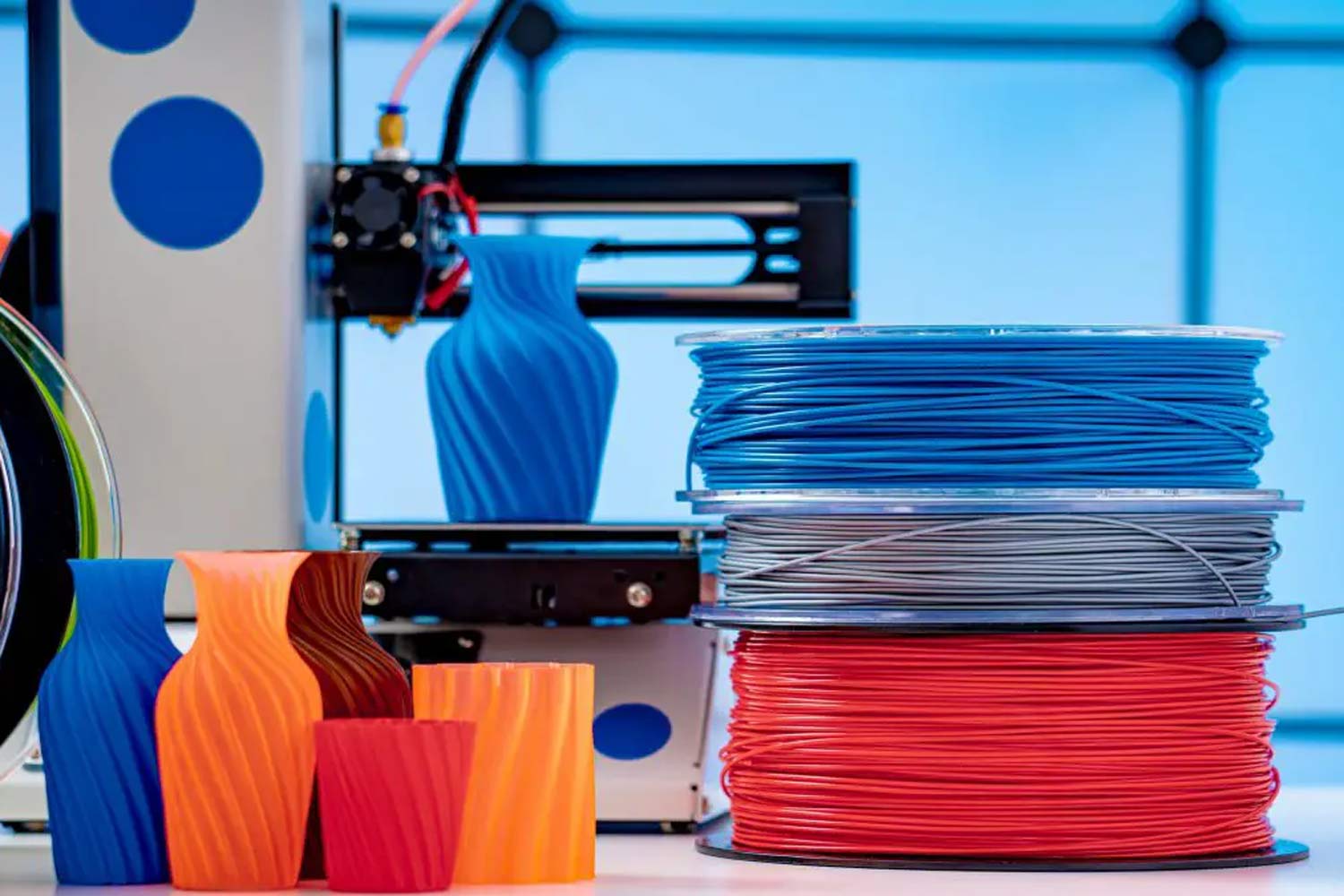Introduction
Welcome to the exciting world of 3D printing! In recent years, 3D printing has emerged as a groundbreaking technology with endless possibilities. One of the most popular and widely used methods of 3D printing is Fused Deposition Modeling (FDM). FDM 3D printers have gained immense popularity due to their affordability, ease of use, and versatility.
FDM, also known as Fused Filament Fabrication (FFF), is an additive manufacturing process where objects are created by depositing layers of material on top of each other. This process allows for the creation of complex and intricate designs, making it a valuable tool in various industries, such as prototyping, manufacturing, and even art.
Unlike traditional manufacturing methods that involve subtractive processes, where material is removed, FDM 3D printing builds objects layer by layer using thermoplastics or other materials in a filament form. The filament is heated until it reaches its melting point and is then extruded through a nozzle. The extruded material is deposited onto a build plate, where it cools down and solidifies, creating a solid three-dimensional object.
One of the key advantages of FDM 3D printing is its affordability. FDM printers are relatively inexpensive compared to other types of 3D printers, making them accessible to a wide range of users, from hobbyists to small businesses. Additionally, the materials used in FDM printing, such as PLA and ABS, are readily available and cost-effective.
The ease of use is another factor that contributes to the popularity of FDM 3D printers. The software that accompanies these printers is user-friendly, allowing even beginners to operate them with ease. This accessibility makes FDM 3D printing a viable option for those who are new to the world of 3D printing.
Furthermore, FDM 3D printing offers versatility in terms of the materials that can be used. Apart from thermoplastics, FDM printers can work with materials infused with various properties, such as strength, flexibility, and even conductivity. This versatility opens up a wide range of applications for FDM 3D printing, from functional prototypes to prosthetics and customized tools.
In this article, we will delve deeper into the world of FDM 3D printing, exploring how these printers work, their benefits and limitations, best practices for using them, and the applications they are commonly used for. Whether you are a DIY enthusiast, a designer, or a professional in need of rapid prototyping, FDM 3D printing can revolutionize the way you create and innovate.
What is FDM?
Fused Deposition Modeling (FDM) is a 3D printing technology that creates objects by depositing layers of material on top of each other. It is one of the most widely used and popular methods of 3D printing due to its affordability, accessibility, and versatility.
In FDM 3D printing, objects are built using a thermoplastic filament. The filament is fed into a heated nozzle, where it is melted to a semi-liquid state. The nozzle moves in a controlled manner, depositing the molten material layer by layer onto a build plate to create the desired shape.
The key component of an FDM 3D printer is the printer head, which consists of a nozzle, a heating element, and a cooling fan. The nozzle controls the flow of the filament, while the heating element melts it. The cooling fan rapidly cools the material after it is deposited, solidifying it.
One of the key advantages of FDM 3D printing is its use of thermoplastics as the printing material. Thermoplastics are polymers that can be melted and reshaped multiple times without degrading their properties. This makes them ideal for additive manufacturing, as they can be heated and extruded through the nozzle repeatedly.
Common thermoplastics used in FDM 3D printing include PLA (Polylactic Acid) and ABS (Acrylonitrile Butadiene Styrene). PLA is a biodegradable and environmentally friendly material, making it a popular choice for eco-conscious users. ABS, on the other hand, offers higher strength and durability, making it suitable for functional prototypes and end-use parts.
In addition to thermoplastics, FDM 3D printers can also work with specialty filaments that are infused with various properties. These filaments can be reinforced with materials like carbon fiber or metal particles, adding strength and rigidity to the printed objects. There are also filaments available with conductive properties, enabling the creation of electronic components directly through FDM printing.
Overall, FDM 3D printing is a versatile and accessible technology that allows users to turn digital designs into physical objects. Whether it’s for rapid prototyping, custom manufacturing, or artistic creations, FDM offers a cost-effective and efficient way to bring ideas to life.
How does a FDM 3D printer work?
FDM 3D printers work based on a simple yet effective process that involves several key components working together to create three-dimensional objects. Let’s take a closer look at the step-by-step process of how a typical FDM 3D printer operates:
- Designing or obtaining a 3D model: The first step in using an FDM 3D printer is to have a 3D model of the object you want to print. This model can be created using 3D modeling software or obtained from online repositories, where numerous pre-designed models are available.
- Slicing the model: Once you have the 3D model, it needs to be prepared for printing. This is done through a process called slicing. Slicing software takes the 3D model and divides it into thin horizontal layers, determining how the printer will deposit material to build the object layer by layer.
- Preparing the printer: Before starting the printing process, the printer needs to be prepared. This involves calibrating the build plate, ensuring it is level and properly aligned. The filament used for printing is loaded into the printer’s filament holder, ready to be fed into the printer head.
- Heating the printer head: The printer head, or extruder, which consists of a nozzle and a heating element, is heated to a specific temperature depending on the type of filament being used. The filament needs to be heated to a molten state so that it can be extruded through the nozzle.
- Extruding the filament: Once the printer head is heated, the filament is pushed through the nozzle by a motorized feeder mechanism. As the filament passes through the hot nozzle, it melts into a semi-liquid state, ready to be deposited onto the build plate.
- Building the object layer by layer: The printer head moves along the X, Y, and Z axes as it extrudes the melted filament onto the build plate. Layer by layer, the material is deposited, following the instructions from the sliced file. The cooling fan, positioned near the nozzle, rapidly cools down the material, causing it to solidify and bond to the previous layers.
- Finishing the print: Once the printing is complete, the object needs to cool down before it can be removed from the build plate. After cooling, the printed object can be detached from the plate and any support structures can be removed, if used during printing.
Throughout the entire process, the printer’s software and controller manage the movements and operations of the printer head, ensuring the precise deposition of the material and maintaining the desired dimensions and shape of the printed object.
In summary, a FDM 3D printer works by heating a filament, extruding it through a nozzle, and depositing the material layer by layer to build a three-dimensional object. This process, combined with the careful slice preparation and precision control, allows for the creation of complex, customized, and functional objects.
Benefits of FDM 3D printing
FDM 3D printing offers numerous benefits that have contributed to its widespread adoption and popularity. Let’s explore some of the key advantages of using FDM technology:
- Affordability: FDM 3D printers are generally more affordable compared to other types of 3D printers. This makes them accessible to a wide range of users, from individuals and hobbyists to small businesses and educational institutions. The lower cost of entry allows more people to embrace the benefits of 3D printing.
- Ease of use: FDM 3D printers are known for their user-friendly interfaces and intuitive software. The slicing software that accompanies these printers simplifies the process of converting 3D models into printable files. Additionally, the straightforward setup and operation make FDM printers ideal for beginners and those new to the world of 3D printing.
- Versatility: FDM 3D printing offers versatility in terms of the materials that can be used. From basic thermoplastics like PLA and ABS to specialty filaments infused with carbon fiber or metal particles, FDM printers can accommodate a wide range of materials with different properties. This versatility opens up countless possibilities for creating functional prototypes, end-use products, and customized designs.
- Rapid prototyping: FDM 3D printing is widely used in the field of rapid prototyping. It allows designers and engineers to quickly iterate and test their designs before moving into full-scale production. With FDM printing, it is possible to create prototypes with complex shapes and intricate internal structures, enabling thorough testing and validation of the design early in the development process.
- Customization: One of the standout advantages of FDM 3D printing is the ability to create highly customized objects. Whether it’s a personalized phone case, a unique piece of jewelry, or a tailored prosthetic limb, FDM technology allows for the production of one-of-a-kind items that suit individual needs and preferences.
- Reduced waste: Unlike traditional manufacturing methods that often involve cutting or subtracting material, FDM 3D printing is an additive process. This means that only the necessary amount of material is used to create the object, minimizing waste. Additionally, with the ability to print support structures only where needed, FDM printing further optimizes material usage.
- Accessibility to education: FDM 3D printing has become an invaluable tool in educational settings. Its affordability, ease of use, and versatility make it suitable for classroom environments, empowering students to explore their creativity and develop valuable skills in design, engineering, and problem-solving.
These benefits collectively demonstrate how FDM 3D printing has revolutionized various sectors and industries. From rapid prototyping to customization and education, FDM technology empowers individuals and businesses to bring their ideas to life in a cost-effective and efficient manner.
Limitations of FDM 3D printing
While FDM 3D printing offers numerous benefits, it is important to be aware of its limitations. Understanding these limitations can help users manage their expectations and make informed decisions when utilizing this technology. Here are some key limitations of FDM 3D printing:
- Limited resolution and surface quality: Compared to other 3D printing technologies, FDM printers generally have lower resolution, resulting in visible layer lines on the printed objects. Achieving smooth and highly detailed surfaces can be challenging. However, advancements in FDM technology have led to improvements in print resolution, and post-processing techniques can help mitigate this limitation.
- Structural strength and material limitations: While FDM prints can be strong and durable, the strength of the final object can be influenced by factors such as layer adhesion and material properties. Layer bonding can be affected by factors like printing speed, temperature, and cooling rates. Additionally, the material options for FDM printing, although versatile, can still be limited compared to other types of 3D printing technologies.
- Overhangs and support structures: FDM 3D printing struggles with printing objects that have overhangs or intricate geometries that require support structures. Overhangs that exceed a certain angle may need support structures, which can be time-consuming to remove and may leave surface imperfections. Complex or delicate designs with intricate internal structures may also pose challenges to FDM printing.
- Printing speed: FDM 3D printing is generally slower compared to other printing technologies. The layer-by-layer deposition process can take a considerable amount of time, particularly for large or complex objects. It is important to consider the printing speed when planning projects with time constraints.
- Material properties and limitations: Different materials used in FDM printing come with their own specific properties and limitations. For example, PLA is more brittle compared to ABS, which offers higher strength but is susceptible to warping. Understanding the material characteristics and their compatibility with the desired application is essential for achieving successful prints.
- Limited print size: The size of objects that can be printed on FDM printers is limited by the printer’s build volume. Large-scale prints may require splitting the object into multiple parts and assembling them later, which can impact overall print quality and structural integrity.
Despite these limitations, FDM 3D printing remains a widely adopted and useful technology for various applications. By understanding and working within these limitations, users can still leverage the benefits of FDM printing to create functional prototypes, customized objects, and unique designs.
Best practices for using a FDM 3D printer
To achieve successful prints and maximize the capabilities of your FDM 3D printer, it is important to follow some best practices. These practices can help ensure optimal print quality, reduce print failures, and enhance the overall printing experience. Here are some key best practices for using a FDM 3D printer:
- Calibrate your printer: Regularly calibrate your printer, especially the build plate. Ensuring that the build plate is level and properly calibrated is crucial for achieving good adhesion and preventing warping or uneven prints.
- Choose the appropriate printing settings: Adjust your printing settings based on the specific filament and object you are printing. Factors such as layer height, print speed, and temperature can significantly impact print quality. Refer to the manufacturer’s recommendations and experiment to find the right settings for your needs.
- Pay attention to the first layer: The first layer is crucial for a successful print. Make sure it adheres well to the build plate by ensuring proper leveling, using a clean build surface, and applying adhesives like glue or a specialized bed adhesive if needed.
- Use supports appropriately: For prints with overhangs or complex geometries, consider using support structures. However, overusing supports can negatively impact surface quality. Use support structures only where necessary to minimize their impact on print quality and to optimize material usage.
- Optimize cooling: Balancing cooling is important for achieving optimal layer bonding and preventing warping. Ensure that cooling fans are properly positioned and adjusted to provide adequate cooling while avoiding excessive cooling that can negatively affect print quality.
- Print orientation: Consider the orientation of your model on the build plate. Orienting it to minimize overhangs, reduce the need for support structures, and optimize layer bonding can greatly improve print quality and stability.
- Regular maintenance: Keep your printer clean and well-maintained. Regularly check and clean the nozzle, ensure the filament feeding mechanism is functioning properly, and regularly lubricate moving parts as needed. This will help prevent clogs, improve print quality, and extend the lifespan of your printer.
- Monitor print progress: Stay attentive to your print job while it is in progress. This allows you to address any issues or detect potential problems early on, such as filament jams, shifting layers, or adhesion issues. Prompt attention can save a print from failure and help you make adjustments for future prints.
- Experiment and learn: Don’t be afraid to experiment with different settings, filaments, or techniques. Learning from your prints, troubleshooting issues, and constantly seeking improvement will help you fine-tune your printer and achieve better results over time.
By implementing these best practices, you can optimize your FDM 3D printing process, increase your success rate, and produce high-quality prints that meet your expectations.
Applications of FDM 3D printing
FDM 3D printing has revolutionized various industries by offering a versatile and cost-effective manufacturing solution. The ability to transform digital designs into tangible objects has opened up endless possibilities for users. Here are some key applications of FDM 3D printing:
- Prototyping: FDM 3D printing is widely used in the prototyping stage of product development. It allows designers and engineers to quickly iterate and test their designs before investing in expensive tooling or manufacturing processes. With FDM technology, prototypes can be produced rapidly, enabling faster design optimization and reducing time to market.
- Customization and personalization: FDM 3D printing enables the creation of customized products tailored to individual needs and preferences. From personalized phone cases and jewelry to customized orthotics and prosthetics, FDM technology empowers users to create unique and functional items that suit their specific requirements.
- Small-scale manufacturing: FDM 3D printing has opened up opportunities for small-scale manufacturing. The ability to produce low-volume, specialized parts or customized products on-demand without the need for expensive molds or tooling is particularly valuable for small businesses, artisans, and niche markets.
- Educational purposes: FDM 3D printing has become an invaluable tool in education. It allows students to learn and grasp complex concepts in fields such as engineering, industrial design, and architecture by bringing their ideas to life. FDM printers are commonly found in schools, universities, and makerspaces, enabling hands-on learning and fostering creativity.
- Architectural modeling: FDM 3D printing has found applications in architectural modeling and visualization. Architects and designers can create scaled models of buildings, landscapes, or prototypes to evaluate and communicate their designs effectively. FDM printing allows intricate details and complex geometries to be accurately replicated, providing valuable insights into the final built structure.
- Functional prototypes: FDM 3D printing is ideal for producing functional prototypes that closely resemble the final product. This allows designers and engineers to test how parts fit and function together, evaluate ergonomics, and identify potential design improvements before moving to mass production.
- Jigs, fixtures, and tooling: FDM 3D printing offers a cost-effective solution for producing custom jigs, fixtures, and tooling used in manufacturing processes. These printed aids can improve workflow efficiency, reduce costs, and provide better ergonomics for operators.
- Art and creative expression: FDM 3D printing has expanded the possibilities for artists and designers to push the boundaries of creativity. The technology enables the creation of intricate sculptures, interactive installations, and unique art pieces that would be difficult to achieve using traditional methods.
These applications highlight the versatility of FDM 3D printing, from rapid prototyping and small-scale production to custom manufacturing and creative expression. As the technology continues to advance, it is likely to find even more diverse applications across industries, enabling further innovation and customization in product development.
Choosing the right FDM 3D printer for your needs
With a wide range of FDM 3D printers available on the market, choosing the right one can be a daunting task. It is important to consider several factors to ensure that the printer meets your specific requirements. Here are some key considerations when choosing an FDM 3D printer:
- Print quality and resolution: Evaluate the printing capabilities of the printer in terms of print quality and resolution. Look for printers that offer high resolution and smooth surface finishes if your applications require detailed and precise prints.
- Build volume: Consider the size of objects that you intend to print. Ensure that the printer’s build volume is adequate to accommodate the size and scale of your desired prints. It is also important to balance the desired print size with the available space in your workspace.
- Material compatibility: Determine the type of materials you wish to print with. Different FDM printers have varying compatibility with different filaments. Ensure that the printer you choose can work with the materials you require, such as PLA, ABS, or specialty filaments with specific properties.
- User experience and ease of use: Assess the user interface and overall user experience of the printer. Look for printers with user-friendly interfaces, intuitive software, and clear documentation. Consider your level of experience with 3D printing and choose a printer that aligns with your skill level.
- Print speed: Evaluate the print speed of the printer. The speed of FDM printing can vary between models and can affect the overall time it takes to complete prints. Assess whether fast printing is a critical factor for your projects or if you value print quality over speed.
- Reliability and durability: Research the reputation and reviews of the printer manufacturer to gauge the reliability and durability of their products. Look for printers that are known for their reliability, consistent performance, and long lifespan to ensure a worthwhile investment.
- Support and community: Consider the availability of technical support and online communities associated with the printer brand. A strong support network can assist you in troubleshooting issues, sharing knowledge, and accessing firmware updates or software enhancements.
- Cost and budget: Determine your budget for an FDM 3D printer and compare the cost of different models within that range. Remember to consider not only the upfront cost of the printer but also the ongoing costs of consumables, such as filaments and replacement parts.
- Additional features: Assess any additional features or accessories that may enhance your 3D printing experience. This could include features such as heated print beds, automatic bed leveling, multiple extruders for multi-color or multi-material printing, or the ability to connect wirelessly.
By carefully considering these factors, you can select an FDM 3D printer that aligns with your specific needs, whether you are a beginner, a hobbyist, an educator, or a professional looking for a reliable and capable printer.
Conclusion
FDM 3D printing has revolutionized the way we create and manufacture objects. Its affordability, ease of use, and versatile applications have made it accessible to a wide range of users across various industries. Whether you are a hobbyist, an engineer, an educator, or a small business owner, FDM 3D printing offers countless opportunities for prototyping, customization, and small-scale production.
By understanding the process of FDM 3D printing, its benefits and limitations, and following best practices, you can maximize the capabilities of your printer and achieve high-quality prints. The ability to quickly iterate and test designs, create customized products, and visualize architectural models has transformed the way we approach product development and problem-solving.
When choosing an FDM 3D printer, consider factors such as print quality, material compatibility, user experience, and budget. Investing in a reliable and suitable printer will ensure a smooth printing experience and allow you to unlock the full potential of this technology.
As FDM 3D printing continues to evolve and advance, we can expect even more exciting applications, materials, and capabilities. From rapid prototyping to customized manufacturing and artistic expression, FDM technology empowers individuals and businesses to bring their ideas to life and accelerate innovation.
So, embrace the world of FDM 3D printing and unlock your creativity, unleash your imagination, and embark on a journey of limitless possibilities.







